The second part of the Designers’ Notes for Die Festung Hamburg is here, bringing the thoughts and considerations of the Development Team.
Should your appetite for destruction grow after reading them, you can enlist for the upcoming Second Echelon of Less Than 60 Miles, covering the Fulda Gap sector: Report for duty by writing to info@TRLGames.com!
Developer’s Notes by Anthony Morphet
For those new to Thin Red Line Games who don’t know me. I am a gamer of some 50 years’ experience but also a retired British Army Colonel who spent most of his junior service in BAOR or similar from the late 70s through the 80s until I attended the German Staff College and served as a General Staff officer in various NATO HQ. The subject of this and similar games was life’s daily round for many of the formative years of my life.
A Marshy Corner of Germany Forgotten by All? (Well All Anglo – Saxons Anyway!)
Look at the map; big rivers and canals, woods, marshes, two operational directions to both attack into and defend against, and a massive city in the middle.
Yet I would argue that many of my fellow Anglo-Saxons have no real idea either what the landscape looks like – look right the picture is near Schneverdingen (hex 2727). Neither do they know much about who was to defend it or who was to attack it. Were I/we to suggest that this might be a more serious avenue of advance for the Soviets than across the “North German Plain” around Hannover endeavouring to crash through the Germans and British then eyes could swivel or even shoot up in horror or disbelief.

The Warsaw Pact – Who Is Here and Why and When and How?
The who or what might be used to attack here was addressed in much contemporary literature both fiction and non-fiction. It was presumed in most western journals to be the purview of 2nd Guards Tank Army – in essence lots of Soviet Motor Rifle Divisions.
Yet as most modern research, particularly Polish and German research, into former records has shown it was a much more diverse mix and it changed on a regular basis. The great thing about Fabrizio’s WP ORBAT detailed above is you can place your own interpretation on the structure of the available forces, their grouping and the mix of nationalities.
The Poles and East Germans
Fabrizio has summarised his thoughts on these two nations’ Armed Forces in his notes above. It was an area of dynamic tension between designer and developer and their respective interpretations of current historical research.
In the end our mutually divergent views balance each other out in that a surplus of Poles balances an NVA that might not be quite as efficient as some might expect it to be. Rest assured there are more than enough of both to allow you to try any interpretation of current thinking you wish.
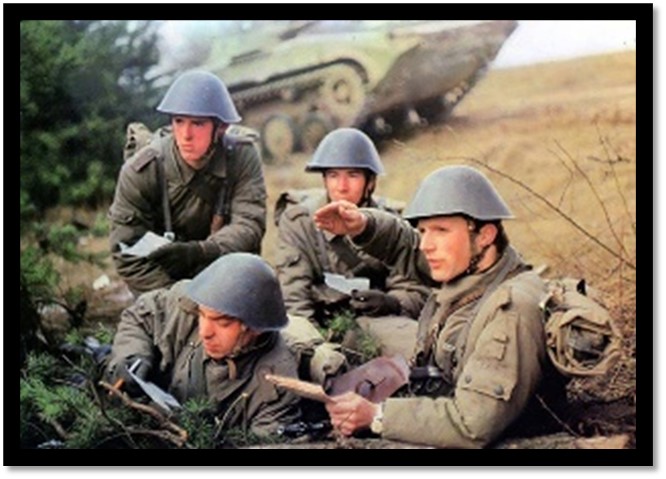
NATO’s Minor Nations and Prejudice
Nicolas will talk in some detail in the following piece on the size, organisation and relative efficiency of these 2 “minor” NATO nations who alongside the ubiquitous Bundeswehr provide the bulk of NATO forces in this game. There is a lot written and assumed about both these nations’ armies and it is our belief that a goodly part of it is wrong.
Portrayal in US – UK Sources from the 70s and Why
Many game designers from the mid-seventies and early eighties have postulated that the conscripts of the Dutch and Danish forces were in essence a bunch of long haired, spliff smoking ne’er do wells who could not be relied upon to turn up, let alone to defend their countries and/or sectors. I have argued the case during the development of this game that that is inherently wrong and is a mixture of Anglo – Saxon prejudice and US appropriations “realpolitik”.
The Case for Prejudice
In the early to mid 1970s the military establishments in both the UK and the US were reeling under several internal domestic pressures – arguably the US more than the UK. In particular in the US the precipitous retreat from Vietnam appeared to many to have been forced by long-haired, pacifist layabouts protesting about things they didn’t understand and undermining the morale and discipline of the US armed forces.
At exactly this time the pictures of Dutch or Danish conscripts in hair nets and sloppy kit seemed to reinforce the view that all military discipline was disappearing amongst European nations. Simultaneously in an impoverished UK riven by internal industrial disputes and apparently with governments of all colours in thrall to all-powerful unions the fact that these same continental hippies were unionised and were agitating for the same in the UK was to be the death knell of all military efficiency.
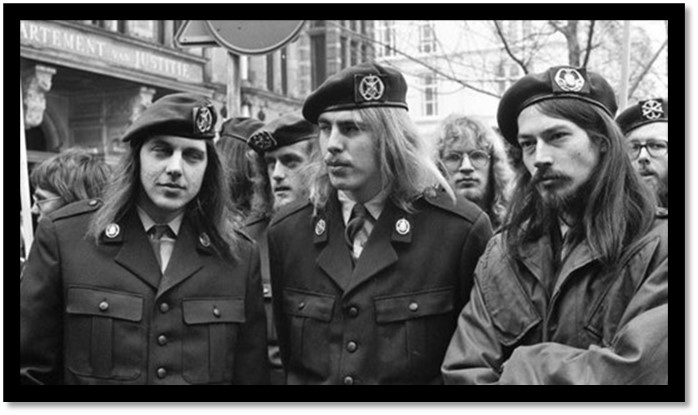
The Case for “Realpolitik”
However the most ubiquitous use of these “perceptions” was in their support of the Realpolitik of US Military Appropriations. The US Armed forces were at a massively low ebb in the early seventies. Not just the debacle in Vietnam but also the fact that almost all their kit was old and being slowly but surely overhauled by the USSR. Mutually Assured Destruction was no longer acceptable to the US people without some attempt to fight a conventional war, and neither was trip wire defence in Europe to the Europeans. In short the US was potentially losing the Arms Race.
The mid to late 70s is full of RAND reports, Senate investigations, CIA, DIA and DoD reports quoted by Fabrizio in support of “Tulips” that universally paint the same picture of doom and gloom. A key plank in many of these reports was that the Europeans couldn’t be relied upon to pull their own weight, UK had no money and the others were socialists with long hair. America had to lead, America had to show backbone and resolve and to do so the Armed Forces needed money and lots of it. Long haired Dutchmen, Germans and Danes were all just grist to the political mill. A rumour and slander became a fact and the fact drifted out of the Senate into mainstream professional and amateur game design where it has resided ever since.
Dutch – Reality
The reality was that even had the above been true in 1975 by 1985 the Dutch were running a rearmament’s programme that was probably the biggest in NATO outside of Reagan’s USA. They were replacing all tanks, all APCs, many guns, AD systems ATGW systems, the Royal Netherlands Air Force was entirely reequipping, as were the Navy and Marines as well.
The issue of mal-deployment of the army was known and whilst the stationing of the entire Korps in Germany was politically impossible the government was laying railway line, increasing flat car ownership by 100s of percentile points in both Holland and Germany and buying more semi-trailers and low-loaders whilst moving the ammo depots from Holland to Germany. Training was at least as good as German conscripts and their staffs were practiced and efficient. They were leaders in computer assistance to Command Post Exercises, so much so that the US Army used to pay the Dutch to functionally check every upgrade to the Warrior Preparation Centre in Kaiserslautern.
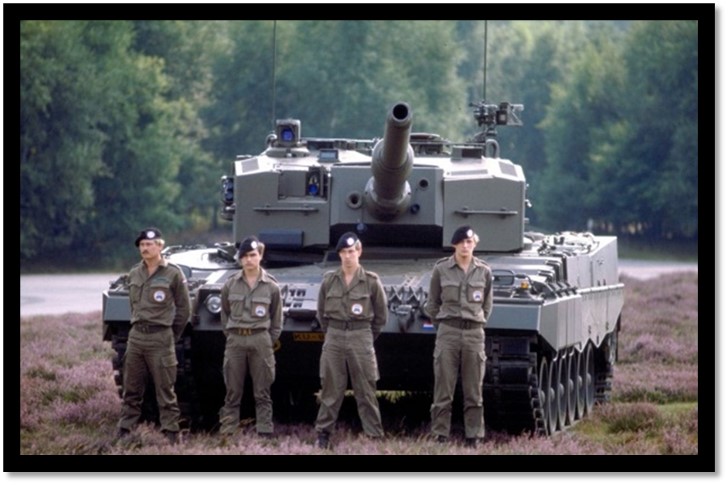
Danish – Reality
The same was not true in Denmark. They weren’t spending money as much as the Dutch or anyone else and as Nicolas will point out they did seek exemptions to many things. However in the 2 years previous to 1985 the overt government support for NATO had caused such internal argument that the government resigned, held a snap election, which returned the Prime Minister with a greater mandate than previously.
Yes the Danes did not want foreign troops or nukes stationed in their country and yes they did not want to spend the amount of money on defence that most nations in NATO spent. However I do not think there is very much doubt that they would have fought to defend Denmark and that there was acceptance that the Jutland Division’s place to do that was in Germany.
Game Mechanics
It would be strange if the developer didn’t at least mention the mechanics of the game. Having put in long hours and hard yards in developing many key concepts in Dogs of War we were not faced with as many new challenges for this game.
The biggest challenge was once again boundaries and although we had resolved the inter corps boundary issue in DOW by a judicious use of the supply rules, the Inter Army Group and Inter Air Force boundary on the NATO side provided a whole new dimension.
In the end we found ourselves having to impose a whole new rule – BALTAP – to deal with the issue. It is not our normal methodology to force things upon players but this is so fundamental to the concept of military operations in 1985 that the rule has its own “interpretational paragraph” that you ought to read.
Once again it is a complex game with many nations, with their own supplies and areas. Perfectly playable as a two player game, playing as a four player with one of the Soviets as primus inter pares would make for a jolly evening’s entertainment.
The past Is a Different Country and We Are All Prisoners Therein.
So where does that leave us? If you own many TRL games you will know that this is a common theme of mine. That one of my roles is to ensure that Fabrizio’s version of 1985 is brought into accord with our central assumption that developments in politics and history up to 1985 were much as they were for real. That the decisions we make are justified and justifiable. Sometimes that has meant addressing urban myths or even slaughtering the odd Holy Cow.
This game with Dutch, Danes, Poles and East Germans has complexities and pitfalls in massive abandon. The dynamic tension between designer and developer has rarely been as taut as it was in producing this game. Yet despite it all or perhaps because of it all I think we have got it right and the gaming experience is all the better for it.
My Parting Thought – Should This Be “Hamburg – Open City”?
One could argue that after the destruction of WW2 the Hamburg Senate might have declared an open city. Will both forces obey international law and not then enter? Makes for a very interesting variant!
Developer’s Notes by Nicolas Michon
I have been privileged to partake in the design of this third volume of my favourite operational series, alongside such giants as Fabrizio, Anthony, John and Lionel. Participating in the design calls, I came to realise how much I still had to learn about things like corps organisation, mobilisation shenanigans, river and canal crossings – and how many difficult judgement calls have to be made given how much apparently reliable contradictory information is out there.
Regarding the latter, I have to say you haven’t heard a design argument until you’ve heard Fabrizio and Tony going at it. I am reminded of a domestic dispute on Mount Olympus between Zeus and Hera – I will not say who is whom… But I will say said disputes are productive because the end product is, to me, as good as it can be. It is therefore with a trembling hand that I jot down a few words about the two new NATO armies included in this volume.
Clockwork Oranje: the Dutch Army in Die Festung Hamburg
Much like the West German Bundeswehr, the Dutch Army in 1985 was made up of conscripts, but with a core of professional or long-term enlisted NCO’s and officers, which made it quite proficient. Dutch units are large, well-equipped, and their training standards are usually good. They also enjoy the benefits of a very flexible divisional organisation, and typically fight as battalion task forces (armored units have at least a company of mechanized infantry attached, and vice-versa), which we have taken into account in rating units – except when the unit’s “sister” tank or mechanized unit will not be able to mobilise within the time frame considered.
The Dutch 41 Pantserbrigade, the only Dutch unit fully deployed in Germany, is a force to be reckoned with, both from a qualitative and quantitative standpoint. Anthony, who actually worked with them back in the day, is of the opinion they were just as proficient as the Bundeswehr.
However the remainder of the Dutch conscription system produced 2 types of units: RIM and Reserve. RIM battalions essentially sent up to a company’s worth of their own soldiers on home leave for the latter part of their service. Those men were still serving solders and there was an excellent system to recall them. The units would be ready within 48 hours of the orders to mobilise being given. However there can be no denying that the soldiers had lost the latter part of their training and unless they had been called back for a major exercise the efficiency of the unit would suffer. These RIM units would have probably formed the bulk of the 1st and 4th Divisions.
Reserve units (primarily the 5th Division and some Corps troops) were formed by the general reserve. In real terms these men had completed their training and their RIM liability and had been transferred to the General Reserve. They were used to form complete units (mostly with older kit upon which they had been trained). These units could also be called up quickly. However they definitely required a degree of additional training before being committed to battle. Hence in this game they rarely appear before D+4.
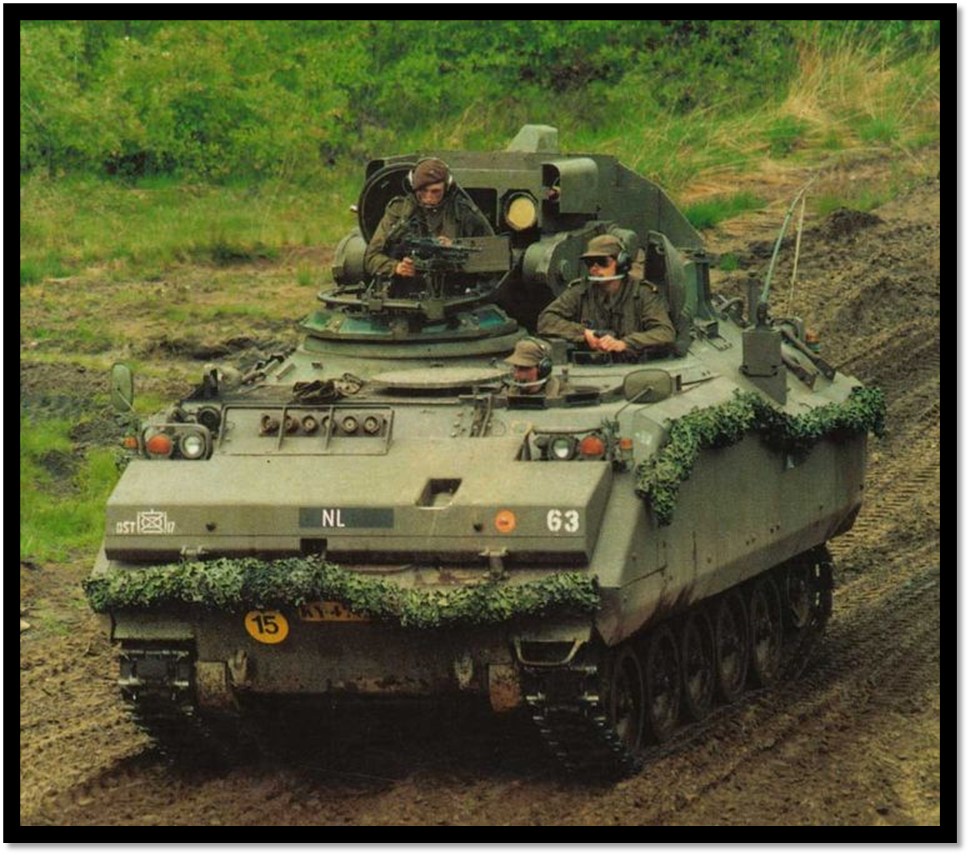
Finally the Dutch army in 1985 was transitioning between tank types (one of them had both Leopard II and Centurion), causing training, logistics and even tactical issues, all of which impact upon cadre values.
This gives us, in reality, a Dutch Army which has a variation in cadre values from 2 for reserve combat units to a few 5s for the 41st Bde stationed in Germany. The values will often vary within Brigades causing yet another headache for the NATO Commander trying to create a stable defence and a functional reserve!
Finally there is that perennial Dutch army problem; how to get them to where the fighting will be. The Dutch 1. Legerkorps is headquartered in Apeldoorn, apart from the 41. Brigade and a recon battalion, so Dutch units need to be filled out, under either the RIM or reserve systems, and then moved several hundred kilometres to the area of operations. This maldeployment was a well-known problem for NATO, and while various measures had been put in place as Tony illustrates above to accelerate mobilisation, it was clear that, absent sufficient notice, the Dutch would not be where they were supposed to be, forcing NATO to engage in a dance of assignments and reassignments until the organisation could be stabilised and the line held. Players will get to experience firsthand how incredibly difficult that particular bit of footwork will be.
I think you will find that the Dutch Army in DFH is far more nuanced than in most “Cold War goes Hot” games on the market. We certainly hope so!
Something Rotten in the Army of Denmark
The 1985 Danish army was extremely different from its current, highly professional iteration. It also relied on a core of professional soldiers, to be completed by conscripts and enlistees, but Denmark in 1985 was characterised by what one of our Danish contacts labelled the “footnote policy”: NATO training and readiness were to apply to all members – except, as stated in a footnote, Denmark.
Contemporary studies were therefore concerned about the state of readiness of the Danish army. Another Danish contact did point out that the situation had improved from the 1970’s, both from an equipment and a training standpoint, so compared to the 1985 series, the Danish cadre rating was doubled: from 1 to 2.
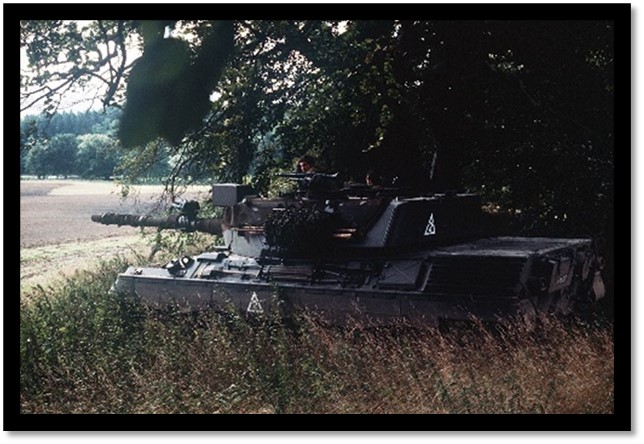
If that were not enough, Danish battalions, which on paper included four companies each with four platoons, had to be fleshed out with reservists. Unfortunately for BALTAP, they could only mobilise three companies of three platoons within the time span of most scenarios. The situation was the same across the combat support arms, and so the Danish artillery units seen in the tactical surprise scenario are missing their third, towed, battery.
So, the Danish army is the weakest, from both a qualitative and a quantitative standpoint, of the NATO members depicted so far. They do possess some minor EW capacity (their SIGINT units were the reference regarding the Polish army), and they are likely to be faced mostly with East German and Polish troops, which are a definite step or two below Soviet Category I divisions.
Developer’s Notes by Lionel Martinez
Some tactical and operational tidbit advice, in no particular order, could perhaps be helpful.
A first general rule to keep in mind is that what works in real life will probably work in the game too. This also means that in most cases it is impossible to know beforehand what the exact combat odds will be: as in real life, the commander will try his best to assign firepower and support to a combat, and to prevent the enemy from doing the same, but in the end a lot of things could go wrong – or very well for the opposing side.
The Advance to Contact
Since the first hours of war, Warsaw Pact should try everything possible to avoid being stuck or slowed down, as using maneuver warfare and keeping the battlefield fluid for as long as possible is a key objective. This requires the Warsaw Pact Commander to orchestrate his movements carefully.
During the advance to contact phase the Pact should exploit its enhanced mobility doctrine, even though an armored regiment in assault posture per division could be useful. Battalion-sized units are probably best used in Recon Posture rather than in March Assault.
The advance to contact will be hindered by the enemy units in screen posture, usually retreating before combat since their job is delaying and not engaging the enemy. Bombardment could make them half-engaged and slow them down enough to be decisively attacked, but they can be a difficult target. It is probably more effective to open up a passage for your main force by sending units adjacent and neutralise the screen area; A battalion-level unit in Reconnaissance or Tactical Posture is the unit of choice for this task.

The Assault
When the enemy main line of defense is reached, finesse is over. You cannot break a whole line: A clear focus, a schwerpunkt, must be defined, keeping in mind that a two hexes hole could be enough to restore maneuver warfare.
How to achieve that? If you want to pierce the enemy defensive line, repeated attacks are often necessary. With twelve movement points, a unit can perform a prepared assault and an hasty assault, or even three hasty assaults, and Warsaw Pact has an edge here as a unit in March Assault Posture could execute two prepared assaults followed by a hasty assault using forced March.
Artillery and Combat Air Support areas must be properly planned before the assault starts, as they could be critical. For Warsaw Pact, the ideal attack will need:
● A preliminary bombardment to half-engage the defender (He will probably do the same with your attacking unit). Counter-battery fire on enemy artillery that could support the combat should also be used whenever possible.
● Reconnaissance and sappers support. If no sappers are available and the enemy is behind defensive works, additional engineers should be assigned to reduce them.
● An HQ with 3 or more Electronic Warfare points.
● One or two units adjacent to the attacked hex, forcing the defender to spread out its forces on a longer front.
● Fire support from artillery, attack helicopters and aircraft. The more the better.
Consumption of artillery ammunition will be an ever present problem. Attack Helicopters are great for ground support and will help alleviating the ammunition problem, but Warsaw Pact player should know that AA fire will gradually damage them up to the point that they will need a refit cycle to keep them operational; As helicopters cannot be used at night, this is the best moment for refitting and plans should be prepared accordingly – remember, nothing happens instantaneously by a kind of magic.
Should the assault go well and the defender decide to hold his position, he is now weakened and in an Engaged status. This will help a second attack, ideally by the same unit.
The Breakthrough
Once the defender retreats, a breakthrough marker will enable the attacker to move to an adjacent empty hex behind the enemy line, as a unit in a breakthrough hex is not affected by enemy blocking units. A second Echelon unit could also follow the first attacker and possibly exploit deeper.
A good defensive hint is therefore to have at least a second line of defense, even composed by weak or support units – but the latter will not help for very long. Another good defensive hint is to avoid empty hexes in the main defensive line whenever possible: An attack supported by two adjacent units has a +4 combat modifier and puts the defender in a very dangerous position.
Integrated Battlefield
An additional point worth discussing is the usage and timing of nuclear and chemical warfare. Chemical weapons are a powerful asset for Warsaw Pact, even though the risk of NATO escalating to nuclear warfare must be evaluated with particular attention and a cold mind.
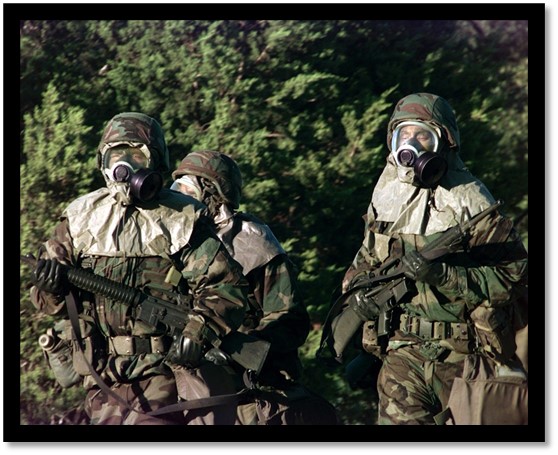
During the first hours NATO normally suffers the effect of operational surprise, giving Warsaw Pact an edge in ground combat. Once the surprise effect is over, Warsaw Pact could consider initiating chemical warfare.
Chemical warfare gives Warsaw Pact a +3 combat modifier during the first 24 hours, and a +2 combat modifier during the following 24 hours. Since NATO cannot use chemicals until 72 hours are passed due to the almost non-existent stocks in Europe, these two combat modifiers cannot be counter-balanced. Moreover, Warsaw Pact can use persistent agents to increase interdiction effect.
Another possible immediate advantage for Warsaw Pact is in the optional “Integrated Battlefield” rule: As soon as chemical or nuclear weapons are released, the time needed to issue orders, execute orders and change posture is doubled for both sides. In this hellish environment, a well-organised Warsaw Pact could be able to reduce the number of orders given to a minimum, while NATO will be probably unable to do the same as it needs to deploy its troops and form the main line of resistance.
I will advise the contrary regarding the use of nuclear weapons, for both sides. Nuclear weapons use a different bombardment table and modifiers, turning towns and cities into deathtraps. They are great for sending enemy units to the graveyard and to contaminate hexes. You will be very pleased to see the enemy vaporised, you would be less pleased when the same happens to your own units.
For Warsaw Pact, one possible operational use is to destroy a small portion of the last defensive line and restore maneuver warfare, but which optional rules are in use can make a big difference: If the optional rule that prohibits NATO from using nuclear weapons first is in effect, NATO could only respond after one turn has passed, thus giving Warsaw Pact three hours to obliterate the last enemy defense and possibly achieve a decisive victory.
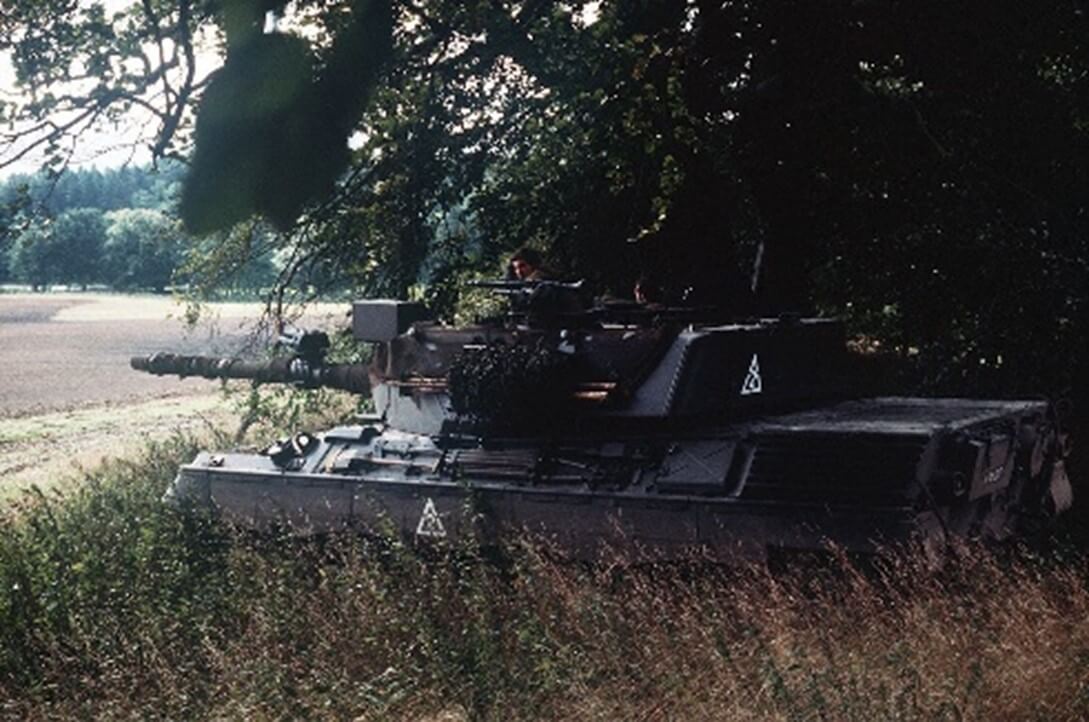
One thought on “Die Festung Hamburg Developer Notes Part 2”
Comments are closed.